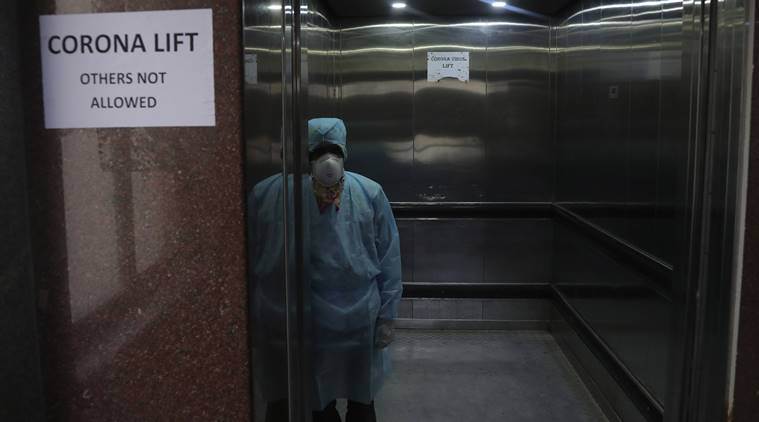 As per the study, the results also underscore importance of continuing to enforce existing air pollution regulations during the COVID-19 crisis. (File Photo/Representational)
As per the study, the results also underscore importance of continuing to enforce existing air pollution regulations during the COVID-19 crisis. (File Photo/Representational)
A new study by Harvard University researchers concludes that long-term average exposure to fine particulate matter (PM 2.5) increases the risk of COVID-19 death by 20 times — a potential cause for alarm for several Indian cities which, for long, have been exposed to high pollution levels.
The study, by Xiao Wu and Rachel C Nethery of Department of Biostatistics at the Harvard T.H. Chan School of Public Health, has found that an increase of just 1 microgram per cubic metre of air (ug/m3) in PM 2.5 is associated with a 15% increase in the COVID-19 death rate, with 95% confidence interval. The study has been submitted for peer review and did not look into individual cases.
In their previous study of 60 million Americans older than 65, the researchers had found that an increase of 1 mg/m3 in long-term PM2.5 exposure is associated with a 0.73% increase in the rate of all-cause mortality. Therefore, a small increase in long-term exposure to PM 2.5 leads to COVID-19 death rate increasing by a magnitude that is 20 times the one estimated for all-cause mortality.
The study includes over 3,000 counties in the US and covers 98% of the country’s population. But it assumes significance for India as the country ranks high on the IQAir chart of worst polluted countries, with 14 of its cities in list of 20 cities with the most hazardous air. Ghaziabad topped the chart followed by Delhi, Noida, Gurugram at fifth, sixth and seventh spots, respectively.
Delhi had an average PM 2.5 level of 98.6 ug/m3 in 2019, which is classified as ‘unhealthy’. The average PM 2.5 levels for 2018 and 2017 for the capital were even higher at 113.5 and 108.2 ug/m3.
Even though pollution levels have come down in India following the announcement of a 21-day lockdown, it is of little consequence, as the study investigates the effect of long-term exposure to high PM 2.5 levels.
The results, the study says, suggest that long-term exposure to air pollution increases vulnerability to experiencing the most severe COVID-19 outcomes. These findings align with the known relationship between PM 2.5 exposure and many of the cardiovascular and respiratory co-morbidities that dramatically increase the risk of death in COVID-19 patients. They are also consistent with findings that air pollution exposure dramatically increased the risk of death during the Severe Acute Respiratory Syndrome outbreak in 2003, which is caused by another type of coronavirus.
As per the study, the results also underscore importance of continuing to enforce existing air pollution regulations during the COVID-19 crisis. The study warns that a failure to do so can potentially increase the death toll and hospitalisations, further burdening the healthcare system and drawing resources away from patients. The study has been adjusted by population size, hospital beds, number of individuals tested, weather, and socioeconomic and behavioural variables. It has been updated with data up to April 4.